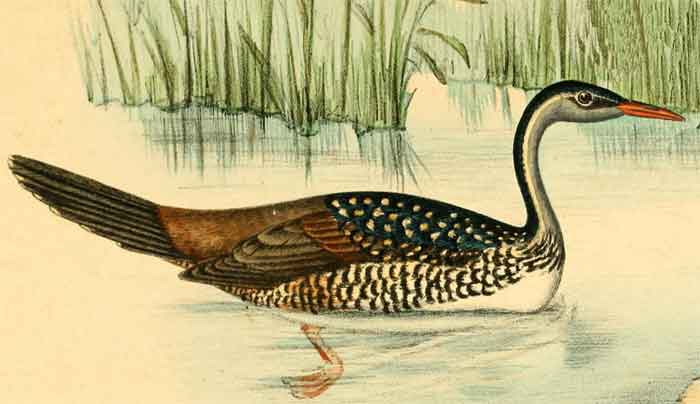
Superregnum: Eukaryota
Cladus: Unikonta
Cladus: Opisthokonta
Cladus: Holozoa
Regnum: Animalia
Subregnum: Eumetazoa
Cladus: Bilateria
Cladus: Nephrozoa
Superphylum: Deuterostomia
Phylum: Chordata
Subphylum: Vertebrata
Infraphylum: Gnathostomata
Megaclassis: Osteichthyes
Cladus: Sarcopterygii
Cladus: Rhipidistia
Cladus: Tetrapodomorpha
Cladus: Eotetrapodiformes
Cladus: Elpistostegalia
Superclassis: Tetrapoda
Cladus: Reptiliomorpha
Cladus: Amniota
Classis: Reptilia
Cladus: Eureptilia
Cladus: Romeriida
Subclassis: Diapsida
Cladus: Sauria
Infraclassis: Archosauromorpha
Cladus: Crurotarsi
Divisio: Archosauria
Cladus: Avemetatarsalia
Cladus: Ornithodira
Subtaxon: Dinosauromorpha
Cladus: Dinosauriformes
Cladus: Dracohors
Cladus: Dinosauria
Cladus: Saurischia
Cladus: Eusaurischia
Subordo: Theropoda
Cladus: Neotheropoda
Cladus: Averostra
Cladus: Tetanurae
Cladus: Avetheropoda
Cladus: Coelurosauria
Cladus: Tyrannoraptora
Cladus: Maniraptoromorpha
Cladus: Maniraptoriformes
Cladus: Maniraptora
Cladus: Pennaraptora
Cladus: Paraves
Cladus: Eumaniraptora
Cladus: Avialae
Infraclassis: Aves
Cladus: Avebrevicauda
Cladus: Pygostylia
Cladus: Ornithothoraces
Cladus: Ornithuromorpha
Cladus: Carinatae
Parvclassis: Neornithes
Cohors: Neognathae
Cladus: Neoaves
Ordo: Gruiformes
Familia: Heliornithidae
Genus: Podica
Species: Podica senegalensis
Name
Podica senegalensis (Vieillot, 1817)
Type locality: Senegal.
Synonymy
Heliornis senegalenis (protonym)
References
Vieillot, L.P. 1817. Nouveau Dictionnaire d’Histoire naturelle, appliquée aux arts, à l'agriculture, à l'économie rurale et domestique, à la médecine, etc. Par une société de naturalistes et d'agriculteurs. Avec des figures tirées des trois règnes de la nature. Tome 14. 627 pp. + 7 tt. Déterville, Paris. p. 277 BHLReference page.
Vernacular names
English: African Finfoot
español: Podica senegalensis
français: Grébifoulque d'Afrique
italiano: Rallo tuffatore africano
Nederlands: Watertrapper
svenska: Afrikansk simrall
The African finfoot (Podica senegalensis) is an aquatic bird from the family Heliornithidae (the finfoots and sungrebe). The species lives in the rivers and lakes of western, central, and southern Africa.
Description
The African finfoot is an underwater specialist with a long neck, a striking sharp beak, and bright red, lobed feet. The plumage varies by race, generally pale underneath and darker on top. The males are usually darker than the females. It superficially resembles South America's torrent duck.
Habits and range
Male
The African finfoot can be found in a range of habitats across Africa, in areas where there are rivers, streams, and lakes with good cover on the banks. This range includes forest, wooded savannah, flooded forest, and even mangrove swamps.
The finfoot feeds on aquatic invertebrates, including both adults and larval mayflies, dragonflies, crustaceans, also snails, fish and amphibians. They are thought to be highly opportunistic and take some of their prey directly off the waters surface. They are adept out of water and will forage on the banks as well, unlike the grebes, which they resemble but are not related to.
Finfoots are usually seen singly or in pairs. They are very secretive. Even experienced ornithologists see them very rarely, making them a prized sighting for birders and twitchers. Because they are so elusive, it is not known if they spend most of their time in the water, where they are almost always seen, or on land.
Their time of breeding varies by area, usually coinciding with the rainy season. They build a nest, nothing more than a mess of twigs and reeds, on a fallen tree above the water. Two eggs are laid and incubated solely by the female. The chicks leave the nest a few days after hatching.
Relationships
The African finfoot belongs to a family, Heliornithidae, whose only other members are the masked finfoot and the sungrebe. Their relationships between this family and other birds are poorly understood.
Status and conservation
The African finfoot's conservation status is hard to determine, given its elusive nature. It is not considered threatened, as it is not persecuted or targeted by hunters, and while scarce, it is very widespread. However, there is concern that it may become threatened, as wetlands are cleared and watercourses altered and polluted. It is also thought to tolerate only minimal disturbance. This and increased habitat fragmentation mean that the species needs to be monitored to safeguard it. There are currently no African finfoots in captivity.
References
BirdLife International (2016). "Podica senegalensis". IUCN Red List of Threatened Species. 2016: e.T22692177A93339914. doi:10.2305/IUCN.UK.2016-3.RLTS.T22692177A93339914.en. Retrieved 12 November 2021.
Handbook of the Birds of the World, Volume Three, Hoatzin to Auks; de Hoyo, Elliot and Sargatal, ISBN 84-87334-20-2
Retrieved from "http://en.wikipedia.org/"
All text is available under the terms of the GNU Free Documentation License

